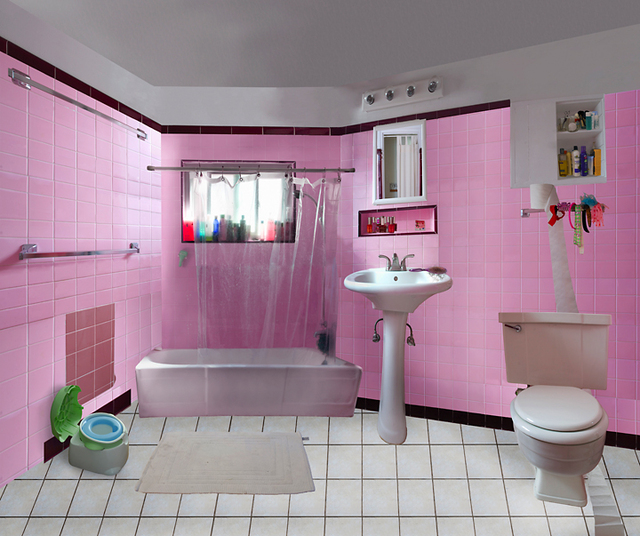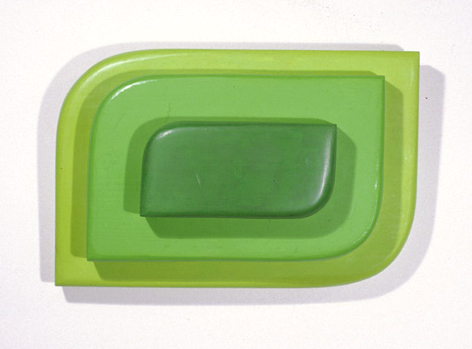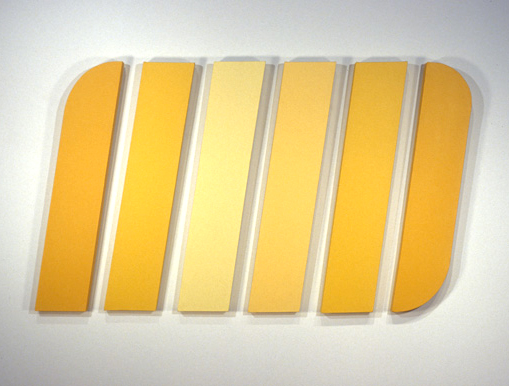When Robert Rauschenberg died three weeks ago, I started thinking of his time teaching at Black Mountain College and of stills I’d seen of his collaborative performance pieces in the ’60s and ’70s (like Pelican or Elgin Tie) . He seemed wholly invested in the possibility of what could happen when you mix with other creative energies to expand the limitations of your material.This brought back a memory of walking through the Bellagio in Las Vegas around 1999. Passing the registration desk, I was stunned to see works by Rauschenberg hanging on the wall. There they were, naked as jaybirds. It seemed strange that the line at the desk wasn’t to see the large screen prints, but instead to procure a non-smoking room with a queen size bed and a mini-bar. But then, how could I know there weren’t Rauschenbergs in the all of the rooms, too?Discoveries like this don’t happen often; though, another time in Vegas, someone told me the best place to see art was in the local Neiman Marcus. When I got there, I found paintings by Yek and Tim Bavington near women’s shoes and outerwear; artists you’d see at James Kelly in Santa Fe or Mark Moore Gallery in Santa Monica. In our local art scene, these discoveries come in the form of stumbling onto a performance by Gabe Romero or finding a drawing in Jim Jacob’s impeccably curated Drawn Closer exhibition at the UNM Art Museum that knocks your socks off. Or even in the Baroque bliss of a tricked-out ’64 Impala convertible that passes you on your way to work.When I see shows like the recent spate of goodness at the John Sommers Gallery, also at UNM, I have to ask what happens next for these artists? Where is the commercial space here in town with the foresight to pick up Andrew Crooks or Jonathan Sandmel? Though Sommers Gallery doesn’t get much attention—mainly because of its unfortunate location—this past spring’s schedule featured formidable work not only by those artists, but also Max Krivitzky, Justin Nighbert and Daniel Kaufmann.The fact remains that there is a considerable gap between what artists make and who sees it in Albuquerque, and there always will be. Artists (and gallery people, too) often ask about collectors, where to find them and how to get them interested, as it’s impossible to will a collector base into existence. Becoming an art collector is predicated on three things: having money, a love for art, and the self-assuredness necessary to buy something that has yet to be qualified in a secondary market or by other collectors. It can be an insecure place from which to work, but maybe that’s trumped by knowing you’re contributing to the cultural depth of your city. All too often, an artist has to sell her right leg to make ends meet and eventually leaves to find another community that may be more supportive of her creative endeavors.A few weeks ago, I was a part of the audience for Icelandic artist Steina’s performance of Violin Power at SITE Santa Fe. She used a violin with a MIDI output to control the audio and visual aspects of various projections. She plucked the D string and the video slowed down. She plucked the A string and it jumped to another frame. A classically trained violinist, it was interesting to watch how she worked from this open-ended, interactive position. What struck me most was that the space was standing-room only. The audience seemed to enjoy everything: waiting for the performance to begin, the actual piece and even the post-performance banter. The vibe emanating through the crowd held an understanding of the artist’s historical gravity.The art crowd is strong and in force—in both Albuquerque and Santa Fe—encouraging the energies of 516 Arts, Stove, 105 Studios, The Petting Zoo, [AC] 2, Basement Films, Black Market Goods, AD Collective, Dwight Hackett Projects, Salon Mar Graff, Meow Wolf and High Mayhem (among others). Some of these efforts will vanish only to be replaced in short order by others with the same underlying goal: to make a place for themselves and the art they want to support.Ideally, more and more people will discover what’s bubbling in these vital spaces. All I can wish for is a recrudescence of the collectors who have taken to the hills. These collectors have made art, or have loved it or smelled it, and can’t wait to join in a larger mix here. Our local artists aren’t minor players, but are, at this moment, making work someone else certainly will be collecting a year from now when they set out for greener pastures. Certainly, within our free market system, that is what should happen. Artists should migrate to those places where the water pools most favorably. But—and this is a big but —when the artists who are here now haven’t been forced to fit into the larger, blander art market, when what they’re doing is impulsive and custom and intellectually rigorous, when what we have on hand is a tricked-out ’64 Impala convertible, why would we leave the keys in it and the doors unlocked?
David Leigh is the former director of Donkey Gallery .











